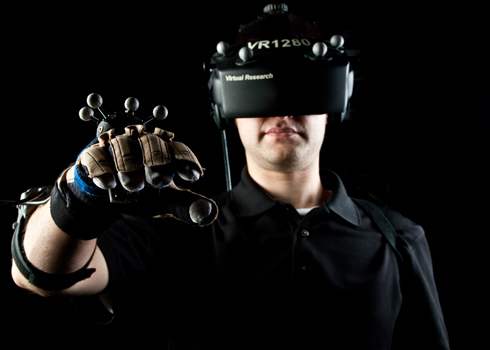Lockheed Martin opened a virtual reality and simulation laboratory in Littleton, Colo, where they can use virtual reality technology to simulate tests of new products and processes before bringing them into the real world.
Some say that the Collaborative Human Immersive Laboratory (CHIL) facility sounds a whole lot like the holodecks on Star Trek. Lockheed Martin spokespeople won’t go that far, but the similarities are unmistakable. It’s a do-it-all kind of facility.
“You can virtually model anything,” said Lockheed Martin spokesman Michael Friedman. “The lab is versatile enough that it can be leveraged for any of our programs.”
But Jeff D. Smith, director of Lockheed Martin’s special projects, does see why people would equate the CHIL project with the Hollywood version.
“This technology is being used in the movie industry, and that’s kind of fictitious,” said Smith in a video introducing the facility. “But this isn’t fictitious. This is real.”

That’s as close as the company will get to calling CHIL a real-world holodeck.
The facility, the company said, is about cost-cutting initiatives — but details about the company’s investment in the facility are sparse. “This is about driving affordability of our products through using this virtual capability before we create it physically,” said Smith.
Using motion tracking and virtual reality technology, CHIL lets engineers explore and troubleshoot products prior to the actual production process. The first project CHIL is being used for is the Air Force’s GPS III system — a $1.46 billion project Lockheed Martin was awarded in early 2008 that is touted as the “next-generation” GPS.

It’s also expected to be used to test NASA’s Orion project — a space commuter vehicle that could take astronauts to the International Space Station, the moon or Mars.
CHIL has countless applications, Lockheed Martin believes, including testing space systems, satellites, launch vehicles and missile defense systems.
“Essentially, the idea is that its easier to move electrons than it is to move molecules,” said Friedman.






